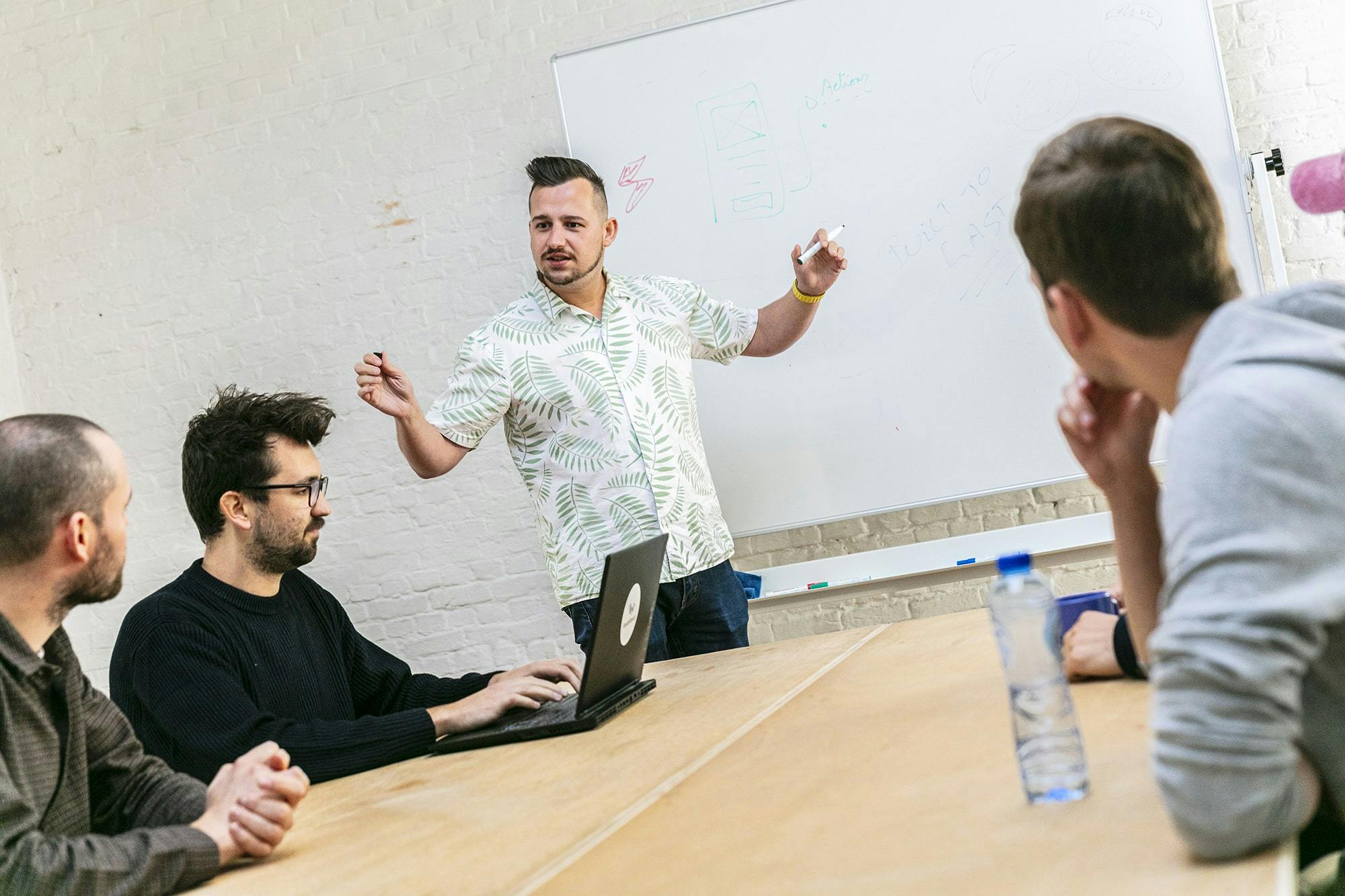
In today's digital landscape, where first impressions are formed within seconds, your website has the power to be a game-changer for your brand. It can instantly grab your audience's attention and guide them through the right steps, or make them look for an alternative within the first few seconds.
What can you expect?
In this blog, we focus on certain key elements that can help determine the success of your website:
- First things first: what makes a platform or application mature and what common mistakes are we seeing today?
- How much importance do you attach to your research phase and what strategic choices lie behind building a platform for your client?
- And what is the importance of smooth collaboration, feedback and, above all, consistency?
Let’s dive right in!
What makes a website mature?
A mature website not only fascinates your audience from the start, but also leads them to their desired goals effortlessly. It's like that one friend who can explain everything so beautifully and knows exactly where to lead you with a story. Such a seamless experience does involve some important elements. And one of the key elements is the design of your website.
Strategic choices behind a design
Design plays a vital role in the success of any website or application, no matter who your target audience is. If you are creating a website for children, you may want to opt for a design that really stands out. If you do it for older people, then it plays to your advantage not to give the website a flashy design.
First impressions matter, and a visually appealing design ensures that users are immediately captivated when they land on the website. The design should be visually stimulating, with the right colours, fonts, ...
Besides aesthetics, good design also focuses on practicality. The arrangement of information, clarity of content and overall interface should be easy to navigate. By establishing a logical hierarchy through the use of headings and font sizes, the design can help users find the desired content easily without feeling confused.
Did you know that there is an Aesthetic Usability Effect that suggests users tend to associate well-designed interfaces with improved usability? So investing in a visually appealing design, with attractive buttons, icons and overall layout, encourages your users to interact more effectively.
Design is also a touch of psychology
In the world of design, there also lies a great deal of psychology. A lot of design patterns have their origins in psychological research. They aim to make your visitor spend as much time as possible on your platform and achieve their goal more efficiently. Our advice? Try taking into account the human brain and how it works. You'll create a more effective user experience with it.
Think, for example, of the classic fill-in form on a website when you want to download something or create a new account. A lot of people are put off by the endless list of questions, so they drop out. The cognitive load increases when users are exposed to too much information at once.
That is why we prefer a flow of several steps. Such a form is divided into smaller parts, which can be completed in different steps. This creates a calmer process so users can focus on one question at a time. Bye bye over-stimulation! If you integrate these patterns in the right way, you will create an environment where your users feel comfortable and want to stay longer on your platform.
The crucial role of customer feedback
When we think of web design mistakes, we often think of errors in a code, poor design,... But we notice that a lot of teams still ask for feedback from their clients too late. By only focusing on your own vision, knowledge and insights during such a project, you might end up wasting more money and time than you think.
Therefore, involve your client from the beginning. Ask for their feedback also during the initial stages of outlining user stories, use cases, interviews,... And so ask your customer for feedback in every step of the way. Design? Feedback. First version developed? Feedback. You get what we mean. It is quite a challenge and requires a lot of time and resources. But it is a fundamental aspect of a successful collaboration. Not only your client, but also their users, will thank you.
Revealing customer needs
You don't create a website or platform overnight. It is therefore very important to pay a lot of attention to the discovery phase. During this phase, it is important to understand your client and their goal and start uncovering all their needs.
So schedule enough meetings with your client to identify problems, pain points and needs. At PandaPanda, we are also fans of conducting end-user interviews of the platform we are building. In this phase, start working with wireframes, flowcharts and usability tests to determine the most ideal solution.
Prepare for kick-off
Getting to know your client works best, in our opinion, during a fiery kick-off. We ourselves kick that off with a workshop. We immerse ourselves completely in our client's world for a few hours and ask a lot of questions. During those workshops, we brainstorm together, do post-it exercises and talk a lot with our client. Of course, you fill them in however you like. But it is an important first step in working with your client.
You can also use that kick-off phase to draw up a schedule with your team, establish communication channels with the client and work towards an initial deliverable. Schedule meetings with your client where, you guessed it, you ask for feedback and set deadlines for your team. All these things together will ensure that your project gets off to the best possible start.
It’s all about balance
Consistency is…
Key! Consistency, just like in life, it’s a crucial ingredient in the world of web design. It has the power to create a seamless user experience. But when various fonts and colours pop up on every page for the same item, it creates total confusion. Are we looking at patchwork or did the designer have a lot of inspiration?
You have to choose elements on your website wisely. Whether it's fonts, colours, size of titles, whatever. Make a thoughtful decision and stick to it. Not only will this make it more fun and easier for a user to navigate through your website. Familiarity is also an important factor to remember here.
So this is where your research or discovery phase comes in handy. During this phase, you determine the initial elements and can ask your customer for the necessary feedback.
Golden tip in digital product design
The golden tip from co-founder Sebastiaan? Simply start with something! Starting something is much better than sitting grinding on an idea. Might sound a bit contradictory. But just dare to start something and evolve from there.
Could you use some help with that start? We happen to be pretty good at that!
